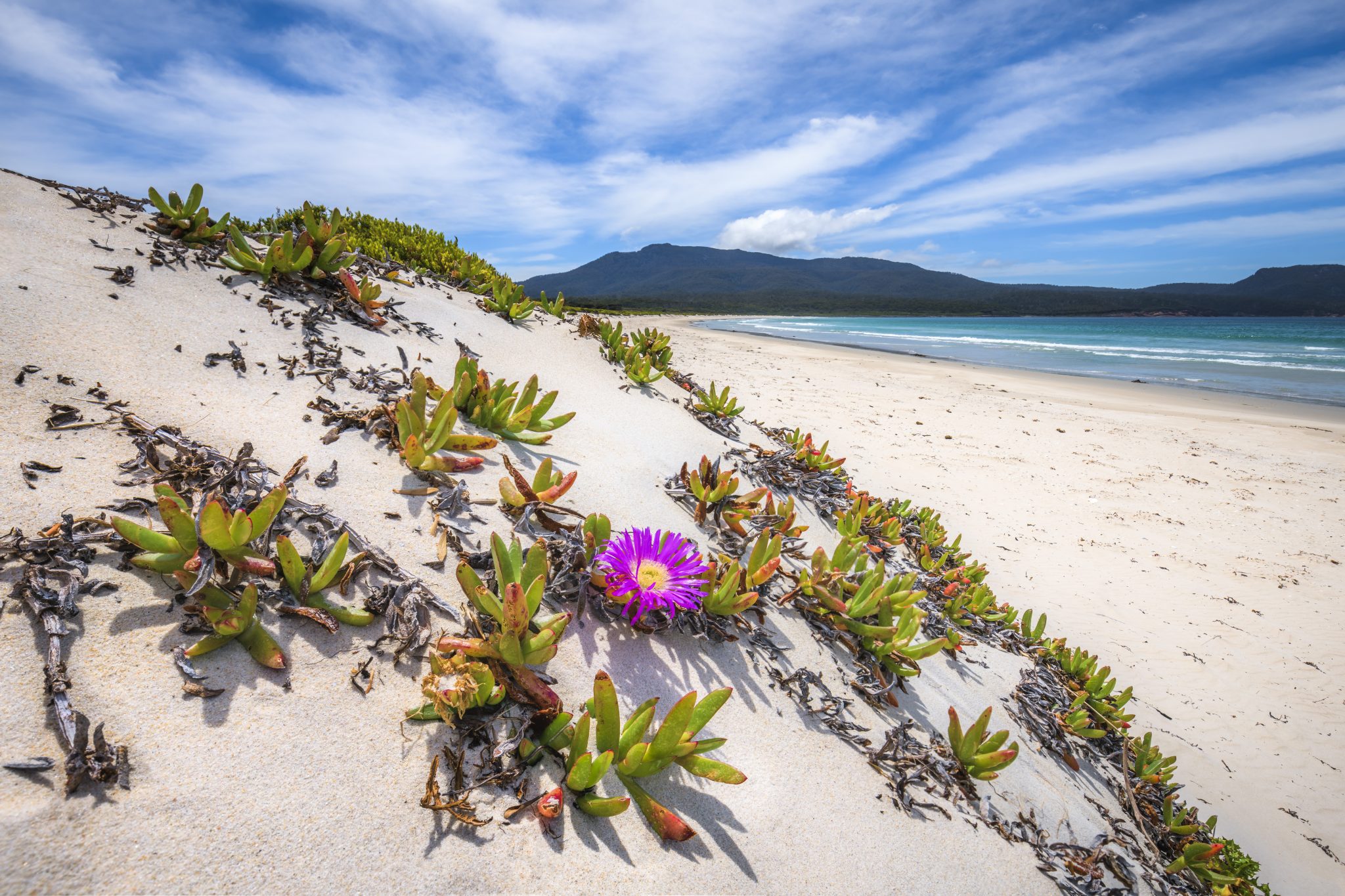There are few places in the world that can boast the biological diversity we have in Tasmania. Once a part of the supercontinent of Gondwana, after its breakup our island state was lucky enough to maintain a similar climate for the past 70-odd million years, which means we have many “living fossil” species thriving in various ideal habitats.
Ancient and Beautiful Flora
Tasmania’s complex terrain, diverse geology, its proximity to the mainland of Australia and yet its relative isolation as an island, all combine to give us a native flora that is staggering in both its diversity and its beauty. It is possible to stand in a rainforest that has species almost unchanged from when dinosaurs roamed the earth, and then, after less than an hour’s drive, be looking out through a dry eucalypt forest, one of the most recently evolved and fire adapted ecosystems on the planet.
The best way to appreciate Tasmania’s flora is by heading out for a hike in one of our beautiful National Parks. There you can lose yourself for hours in nature and find yourself constantly surprised by what you discover. The best time of year for wildflowers is November to mid-January, depending on the year, the location, and what you are hoping to find.
As an introduction to Tasmanian flora, let’s start in the Tasmanian mountains and work our way down to sea level, pausing to admire seven distinctive Tasmanian plants along the way.
Richea scoparia – Scoparia
One of the most spectacular wildflowers when in bloom, this low spikey shrub is ubiquitous with the Tasmanian High Country. Growing over the 900m elevation mark, this hardy plant thrives in our harsh winters.
Isophysis tasmanica – Tasmanian Purplestar
This beautiful and rarely-seen plant grows on mountainsides in the south and west. Growing in low alpine heathlands, the large purple flower is striking, made more so because it grows so remotely it is rarely seen by anyone other than dedicated bushwalkers
Telopea truncata – Tasmanian Waratah
This beautiful red flower is endemic to our island state and is much smaller and more fragile-looking than those found on the mainland. It flowers in November-December, and the flowers produce so much nectar it often literally overflows from the petals. It is a valuable food source for many birds, as well as the adorable pygmy possum.
Eucryphia lucida – Leatherwood
his beautiful rainforest tree is the source of our famous leatherwood honey. Flowering January-February, the large white flowers can be so dense the tree appears to be covered in blooms, the forest floor carpeted in fallen petals. The leatherwood is a great example of our unique Gondwanan heritage, as its closest relative grows in South America, another clue that these two continents were once joined together.
Eucalyptus globulus – Tasmanian Blue Gum
Not only is this gum our State Floral Emblem, it is also one of our most impressive eucalypts and has the largest and sweetest smelling flowers of our native gums. Growing up to 60m high and with a habitat ranging from sea-level to around 500m, the blue gum has large dropping leaves and a beautifully coloured and streaked bark. Flowering in pockets from October until January, coastal blue gum forests provide spectacular walking. Best place to see: Maria Island National Park.
